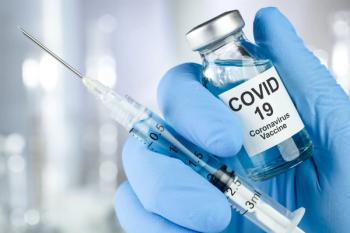
Levels of Certain Thyroid Hormone May Help With Risk Stratification in MM
With survival of multiple myeloma ranging from less than 1 month to over 10 years, the researchers highlighted the importance of risk stratification to quickly identify patients who are high risk with poor prognosis and could benefit from different treatment strategies and close surveillance.
Low levels of a certain thyroid hormone may have broader implications for newly diagnosed patients with
According to the single-center
With survival of MM ranging from less than 1 month to over 10 years, the researchers highlighted the importance of risk stratification to quickly identify patients who are high risk with poor prognosis and could benefit from different treatment strategies and close surveillance. The researchers say their findings indicate that low T3 levels—an easily measured hormone—may aid in risk stratification for these patients.
The group observed significantly worse OS (34 months vs 85 months) and PFS (20 months vs 52 months) among the 80 patients (39.8%) with low T3 syndrome at baseline compared with patients without the syndrome.
“As to why low T3 syndrome at baseline was strongly associated with survival in MM patients, we suggested that it was probably due to the correlations of low T3 syndrome with not one but several known prognostic factors,” explained the researchers.
They added, “the higher inflammation state, serum β2-MG, and creatinine levels, lower hemoglobin and albumin levels, and more advanced ISS [International staging system] and [Revised]-ISS stages in low T3 syndrome patients in this study suggested that elevated inflammation, malnutrition, anemia, renal dysfunction, and more advanced disease severity stage probably could explain the predictive ability of low T3 syndrome for the prognosis in MM.”
Subgroup analyses showed that low T3 syndrome had poor implications for survival regardless of whether or not the patient received novel treatments (bortezomib and/or lenalidomide-based treatment) and for patients not receiving autologous stem cell transplantation.
The researchers found that serum FT3 was predictive of mortality during the entire follow-up period and had positive correlations with albumin and hemoglobin levels and had negative correlations with β2-MG, creatinine, neutrophil/lymphocyte ratio, and (neutrophil+monocyte)/lymphocyte ratio. The researchers explained that these findings suggest multiple factors are likely connected to low T3 syndrome in the disease.
“[Receiver operator characteristic curve] analyses showed that FT3 was a significant predictor for both death and one-year death. The optimal cut-off values of FT3 for predicting death and one-year death were 2.36 pg/mL and 2.34 pg/mL, respectively,” detailed the researchers. “Both above values were close to the lower limit of the FT3 normal range (2.3 pg/mL), which also was the value used to define low T3 syndrome in this study.”
FT4 and thyrotropin were also included in ROC analyses, although FT3 had the largest area under the curve.
Reference
Pan Q, Jian Y, Zhang Y, et al. The association between low T3 syndrome and survival in patients with newly diagnosed multiple myeloma: a retrospective study. Technol Cancer Res. Published online April 20, 2020. doi:10.1177/15330338221094422
Newsletter
Stay ahead of policy, cost, and value—subscribe to AJMC for expert insights at the intersection of clinical care and health economics.









































